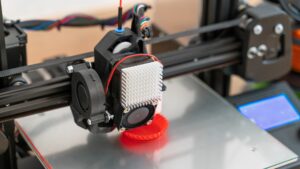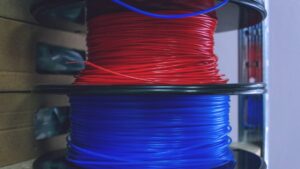
A Look at the Different Densities of 3D Printing Materials
There’s so much to learn about 3D printing materials. Come and find out what to look for when examining the different densities of 3D printing filaments.
844-810-1385
The best way to form durable 3D objects is to adjust your 3D printer settings and buy the right filament type. You have many resources to seek out, but this guide will help you learn the right things to know for printing durable 3D objects.
To ensure every part of your 3D item is strong, you need to check your infill density levels. The infill is a pattern used to add overall density to a piece. When you don’t add infill, your parts come out hollow, resulting in easy breakage.
Make sure to add infill to enhance your object’s durability. The infill comes in various design patterns, such as honeycomb. However, the biggest question to ask is how much filling your 3D model needs. If you are designing a lightweight item, your count should be no more than 25 percent. If you need a print that’s designed for impact and can support weight, aim as close to 100 percent as possible.
The type of filament you pick can alter your final creation’s durability. You have choices but you should stick to the option that’s easiest to use and doesn’t require too many setting adjustments. The available options are ABS, PLA, and PETG.
PLA is a widely used 3D filament that’s tough and affordable. This filament type is mainly used to make plastic items, like containers, packaging materials, and medical implants.
The greatest thing to know about PLA is its high psi of 7,250. That number is so high that PLA deserves to have the title of toughest filament. The only downside is that it can break easily if enough force is used, and you shouldn’t print PLA at a high temperature.
ABS is another excellent choice. Although it’s not as tense as PLA, it’s still suitable to create durable 3D objects. Compared to PLA, ABS has a higher chance of not shattering. When making contact with a hard surface, the material tends to bend.
Though this is a great filament, it emits a strong odor when printing, so you will need to ventilate the room to reduce the smell. Additionally, ABS-made objects tend to crack internally because of the tension caused by the layers cooling on the inside. Limit your thermal expansion by decreasing your 3D printer’s temperature.
Another popular filament choice, PETG is great for making complex designs. It’s great for making storage containers and signs. The only drawback is that it’s not UV-resistant, so it’s recommended to keep this material far from direct sunlight.
Your 3D design needs support beams. Just as a commercial building needs beams to hold multiple floor levels, your object needs the same thing. You can calculate how many walls you need according to your project size. The larger the project is, the more support you’ll need.
Don’t forget about wall thickness. If your walls are as thin as a stick, they will break. As you learn all you need to know about 3D printing durable objects, don’t forget to shop for a tough 3D filament. Filamatrix offers an exciting selection of strong fibers for your 3D printer.

There’s so much to learn about 3D printing materials. Come and find out what to look for when examining the different densities of 3D printing filaments.

Those interested in 3D printing have a lot to learn on how to use the system properly. Find out what you need to know about 3D printing and humidity levels.

3D printing has many variables that both beginners and experts need to know. Find out what effects temperature has on 3D printer filament.
Get professional insights, industry news, and our latest deals